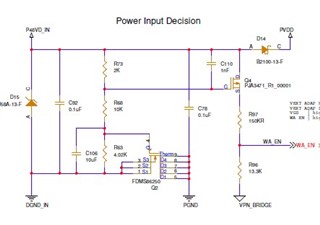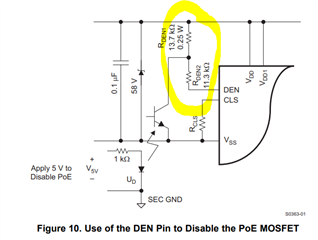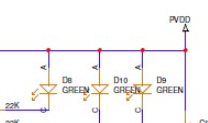Other Parts Discussed in Thread: TPS23753, , LM5022, TPS2373
Hi,
please help implement adapter priority over POE PSE input.
according to "Advanced Adapter ORing Solutions using the TPS23753 " I can use "Option 3 Adapter Priority" only, since TPS2372 has no disable pin or adapter detection pin correct?
design contain PD70224 bridge, TPS2372-3 and LM5022 flyback.
when inserting power from an external adapter, we have a priority circuit to control the enables of the ICs, this should turn off the bridge and make it act as a rectifier. Now I need to add a solution to disable the TPS2372.
I want to add another branch from the Q4 drain (in the schematic it is placed incorrectly, the drain and source are opposite) to disable the TPS2372 according to the application note option 3 but without an optocoupler.
please help with how to implement this.








